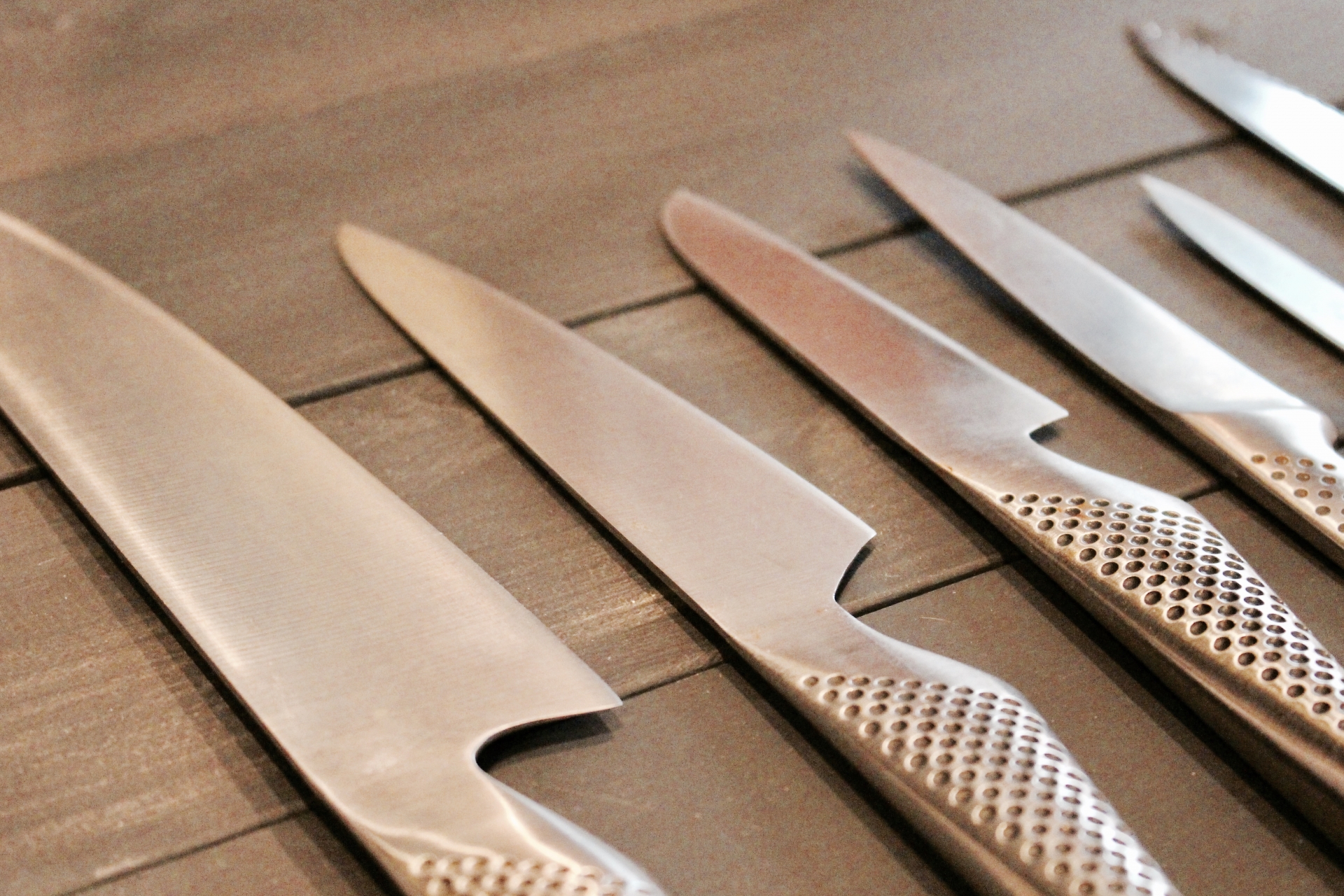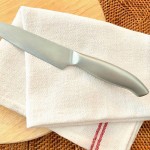Japanese Knives Sharpening Guide Part 1

Japanese knives are not only beautiful, but they’re also versatile, durable, and extremely sharp. Knowing how to correctly sharpen a Japanese knife will not only prolong its life so it gives you many years of useful service but will also ensure excellent performance.
The only recommended way to sharpen Japanese knives is using a whetstone. For first-timers, the idea of sharpening your own knife can be daunting, however the process is quite simple and straightforward. The more you sharpen the knife, the easier the process becomes and very soon you’ll become proficient.
Below is a sharpening guide for Western-style Japanese knives. Western-style Japanese knives are mostly double-bevelled, and while different types of knives require different sharpening techniques due to the blades’ shape, size, and bevel angles, the basic principles of sharpening are the same.
Equipment preparation
First, gather your knife, whetstone, towel, and a bucket or container of water to soak the whetstone. When choosing a whetstone, keep in mind they come in various grit sizes depending on the purpose. Low grit whetstones (120~400) are for blades that are extremely damaged or dull, rough sharpening and removing chips. Medium grit whetstones (700~2000) are for normal sharpening, and high grit whetstones (3000+) are for removing fine scratches, polishing, and putting finishing touches to a blade. For most beginners, a combination of a medium and high grit whetstone should be enough to start off with.
Whetstone preparation
Usually whetstones should be soaked in water for approximately 10 to 20 minutes, however whetstones come with a specific manufacturer instructions which should be followed. When soaked in water, bubbles should form in the water. When no more bubbles appear in the water, then the stone is ready for use. It’s important to read the manufacturer’s instructions carefully before use, as not all whetstones need to be soaked in water, while others may just need a spray of water as opposed to being soaked for an extended period of tie.
Place the whetstone on a flat surface
Some whetstones come with special non-slip bases for use when sharpening, however if your whetstone doesn’t include one, you can lay a damp towel flat under the stone to keep it from slipping. The whetstone should be placed in a way so that the short side is facing you. It is important to make sure the top surface of the whetstone is completely flat, as stones can become indented after extended use. If your whetstone is indented, you can use a whetstone flattener to make it level again.
Sharpening the right side of the blade
To start, hold your knife with your right hand. Keep your index finger on the spine of the blade, wrap your bottom three fingers around the handle, then place your thumb on the flat surface of the knife. The knife should be held at a 45 degree angle to the stone, with the sharp edge facing your body. Your left hand will be used to press the cutting edge of the knife against the whetstone.
Find the correct bevel sharpening angle
To find the correct bevel sharpening angle on your knife, first start by placing the blade flat on the whetstone. Lift the spine of the blade slowly until you feel the bevel is lying flat against the stone. Once flat, hold that angle, and slide the blade across the whetstone. If it slides too easily, then the angle is not high enough. If it’s catching too much, then the angle is too high. You’ll need to experiment to find the correct angle, however the most important thing is to keep the same angle while you sharpen the blade. Another point to keep in mind is that some knives may not have a symmetrical bevel angle on the left and right hand side of the blades. Once you find the correct angle for sharpening, you can mark it with a marker for future reference.
We’re now halfway through the knife sharpening process. There are a lot more details still to be discussed, so we’ll continue in Japanese Knives Sharpening Guide Part 2.

